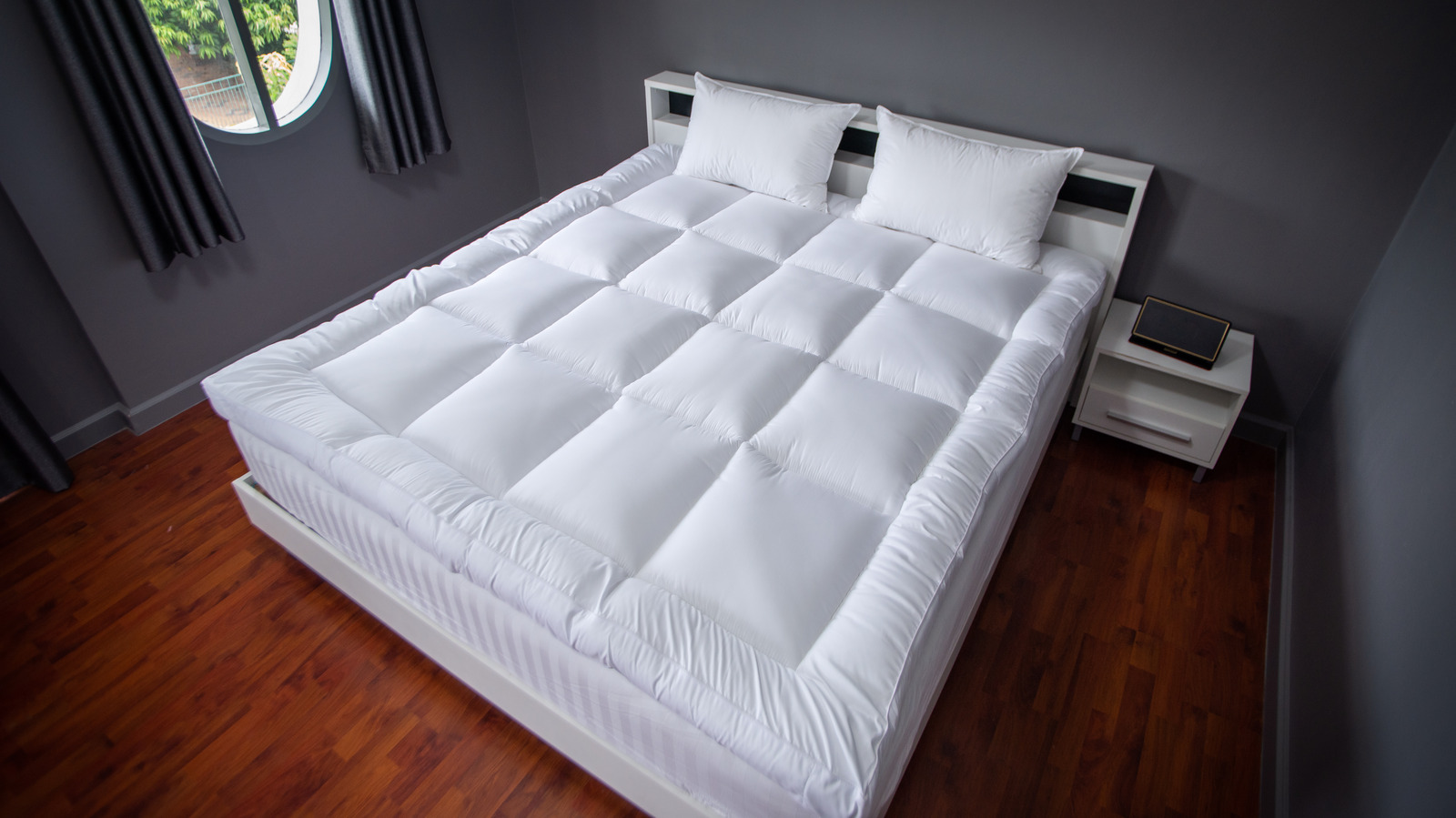

Articles
How To Store A Mattress
Modified: January 18, 2024
Looking for articles on how to store a mattress? Find useful tips and guides on proper mattress storage here to preserve its condition for longer.
(Many of the links in this article redirect to a specific reviewed product. Your purchase of these products through affiliate links helps to generate commission for Storables.com, at no extra cost. Learn more)
Introduction
When it comes to storing a mattress, proper care and preparation are essential to maintain its condition and extend its lifespan. Whether you’re moving to a new home, downsizing, or simply need to free up some space, knowing how to store a mattress correctly can prevent damage such as stains, odors, and even structural issues.
In this article, we will guide you through a step-by-step process on how to store a mattress properly. From cleaning and preparing the mattress to choosing the right storage location and properly wrapping it for protection, we’ll cover all the necessary steps to ensure your mattress remains in top-notch condition during its time in storage.
By following these guidelines, you can rest assured knowing that your mattress will be preserved and ready for use whenever you may need it in the future. So let’s dive right in and learn how to store a mattress the right way!
Key Takeaways:
- Properly preparing and storing a mattress is crucial for maintaining its quality and extending its lifespan. From thorough cleaning and wrapping to choosing the right storage location, each step plays a vital role in preserving the mattress’s integrity.
- By dedicating time and effort to properly store your mattress, you can ensure that it will be in optimal condition when you eventually need to use it again. Following these steps will help safeguard your investment and provide you with a comfortable and supportive sleep surface for years to come.
Read more: How To Store Mattresses
Step 1: Clean and Prepare the Mattress
The first step in storing a mattress is to ensure it is clean and properly prepared. This will help prevent any dirt, dust, or stains from settling into the fabric and potentially causing damage over time.
Here’s what you need to do:
- Remove all bedding and accessories: Strip the mattress of all sheets, blankets, and mattress protectors. Wash and pack them separately for future use.
- Vacuum the mattress: Use a vacuum cleaner with an upholstery attachment to thoroughly clean the mattress surface. Pay close attention to crevices, seams, and corners where dirt and dust tend to accumulate.
- Spot clean any stains: If you notice any stains on the mattress, treat them with a gentle, fabric-friendly stain remover. Follow the instructions on the product, and make sure to test it on a small, inconspicuous area before applying it to the stain.
- Allow the mattress to air dry: After cleaning and spot treating, allow the mattress to air dry fully before proceeding to the next steps. This will ensure that no moisture is trapped within the mattress, which can lead to mold or mildew growth.
- Apply a mattress protector: Consider investing in a mattress protector specifically designed for long-term storage. These protectors provide an extra layer of defense against dust, pests, and moisture.
Once you’ve completed these steps, your mattress will be clean and ready to be stored. Taking the time to properly clean and prepare the mattress will help maintain its quality and keep it in good condition during its time in storage.
Step 2: Remove Bedding and Accessories
Before storing your mattress, it’s crucial to remove all bedding and accessories. This not only helps maintain the cleanliness of the mattress but also prevents any potential damage or deterioration during storage.
Here’s what you need to do:
- Strip the bed: Start by removing all sheets, pillowcases, comforters, and any other bedding on top of the mattress. Fold and pack them separately for storage.
- Remove pillows and cushions: Take off any pillows, cushions, and decorative items from the mattress. Store them separately or in vacuum-sealed bags to save space.
- Detach any removable parts: If your mattress has any detachable parts like headboards or footboards, carefully remove them. Pack these parts securely to prevent any damage during storage.
- Take out mattress toppers or pads: If you have any mattress toppers or pads, remove them from the mattress. Clean them according to the manufacturer’s instructions and store them separately.
- Check for any hidden items: Before storing the mattress, check for any hidden items or debris underneath. Remove any loose objects, such as toys, books, or loose change, to avoid discomfort or damage to the mattress.
By removing all bedding and accessories, you’re ensuring that your mattress is ready for storage. This step allows for proper cleaning, protects the accessories from potential damage, and prepares the mattress for the next stages of the storage process.
Step 3: Vacuum and Spot Clean
Once you have removed all bedding and accessories from the mattress, it’s time to give it a thorough vacuuming and spot cleaning. This step will help eliminate any remaining dust, dirt, and stains, ensuring that your mattress is clean and fresh for storage.
Follow these steps to vacuum and spot clean your mattress:
- Vacuum the entire mattress: Use a vacuum cleaner with an upholstery attachment to vacuum the entire surface of the mattress. Make sure to go over the top, sides, and bottom to remove any loose debris, dust, or pet hair.
- Pay attention to crevices and seams: Use the crevice attachment or the brush attachment on your vacuum cleaner to reach the crevices and seams of the mattress. Dust and dirt tend to accumulate in these areas, so it’s important to give them extra attention during vacuuming.
- Spot clean any stains: If your mattress has any visible stains, it’s crucial to spot clean them before storing. Use a mild fabric cleaner or a mixture of hydrogen peroxide and water to treat the stains. Apply the cleaner directly to the stained area and gently blot with a clean cloth or sponge. Avoid using excessive moisture, as it can damage the mattress.
- Allow the mattress to air dry: After spot cleaning, allow the mattress to air dry completely. This will prevent any moisture from being trapped within the mattress, which can lead to mold or mildew growth.
Vacuuming and spot cleaning the mattress before storage helps maintain its cleanliness and freshness. By removing any dirt, allergens, and stains, you’re ensuring that your mattress stays in good condition while in storage and is ready for use when needed.
Step 4: Disassemble if Needed
In some cases, you may need to disassemble your mattress before storing it, especially if it’s a larger or more complex type of mattress, such as a bed-in-a-box or an adjustable bed mattress. Disassembling the mattress can make it easier to transport and store, as well as protect it from potential damage during storage.
Here’s what you need to do:
- Check manufacturer’s instructions: Refer to the manufacturer’s instructions or guidelines for disassembling your specific type of mattress. This will ensure that you follow the correct steps and avoid any unnecessary damage.
- Remove detachable parts: If your mattress has any detachable parts, such as headboards, footboards, or side rails, carefully remove them according to the manufacturer’s instructions. Pack them securely and label them for easy reassembly later.
- Separate layers: If you have a mattress with multiple layers, such as a hybrid mattress or a mattress with a separate pillow top, consider separating the layers for easier storage. Follow the manufacturer’s instructions or consult a professional to ensure you do this correctly.
- Wrap and protect individual components: If you disassemble your mattress into separate components, it’s important to wrap and protect each component individually. Use mattress bags, bubble wrap, or protective covers to prevent damage during storage.
- Label and organize components: As you disassemble and wrap each component, label them clearly and keep them organized. This will make it easier to reassemble the mattress when the time comes to use it again.
Disassembling your mattress, if needed, can help save space and protect the individual components during storage. Following the manufacturer’s instructions and taking the necessary precautions will ensure that your mattress stays in excellent condition while in storage and can be easily reassembled when you need to use it again.
When storing a mattress, it’s best to keep it flat to maintain its shape. Avoid bending or folding it, as this can damage the internal structure. Additionally, cover the mattress with a breathable, waterproof cover to protect it from dust, moisture, and pests.
Read more: How To Store Mattress
Step 5: Wrap and Protect the Mattress
Properly wrapping and protecting your mattress is a crucial step in storing it. This will shield the mattress from dust, moisture, pests, and potential damage during its time in storage. Investing a little extra time and effort in wrapping and protecting your mattress can significantly extend its lifespan and ensure its quality remains intact.
Follow these steps to wrap and protect your mattress:
- Use a mattress bag or cover: Choose a high-quality mattress bag or cover that is made of durable, breathable material. This will prevent dust, moisture, and pests from getting inside the mattress. Make sure the bag or cover is large enough to fully encase the mattress.
- Ensure the mattress is clean and dry: Before wrapping, make sure your mattress is clean and completely dry. Any moisture trapped inside can lead to mold or mildew growth during storage.
- Carefully slide the mattress into the bag or cover: Gently slide the mattress into the mattress bag or cover, ensuring it fits securely. If needed, enlist the help of another person to make this process easier and to prevent any unnecessary strain or damage to the mattress.
- Seal the bag or cover: Once the mattress is fully inside the bag or cover, use the provided closure or seal it tightly with packing tape. Make sure there are no gaps or openings that could allow dust, insects, or moisture to enter.
- Additional protection: For added protection, you can wrap the mattress in a few layers of bubble wrap or thick blankets before placing it in the bag or cover. This will provide an extra buffer against any potential bumps or impacts during storage.
- Label the bag or cover: Finally, label the bag or cover with the contents, size, and any other necessary information. This will help you easily identify the mattress when you need to retrieve it from storage.
By properly wrapping and protecting your mattress, you are creating a barrier that will shield it from external elements. This will ensure that your mattress remains clean, fresh, and undamaged while in storage, ready for use whenever you need it again.
Step 6: Choose the Right Storage Location
Choosing the right storage location for your mattress is crucial in ensuring its safety and longevity during the storage period. The ideal storage location should provide a clean, dry, and well-ventilated environment that is free from temperature fluctuations and potential hazards.
Consider the following factors when selecting a storage location for your mattress:
- Climate control: Opt for a storage space with climate control capabilities, such as temperature and humidity control. Extreme temperature fluctuations and high humidity levels can damage the mattress over time.
- Cleanliness: Choose a clean and well-maintained storage area to minimize the risk of dust, dirt, and pests. Ensure that the floor and walls are clean before placing your mattress inside.
- Avoid damp areas: Stay away from storage spaces that are prone to leaks, dampness, or excessive moisture. Moisture can lead to mold, mildew, or even rot the mattress.
- Pest prevention: Look for a storage location that has effective pest control measures in place. Pest infestations can cause significant damage to your mattress, so it’s crucial to prevent any unwanted visitors.
- Avoid direct sunlight: Choose a storage area where the mattress will be protected from direct sunlight. Prolonged exposure to sunlight can fade and deteriorate the mattress materials.
- Ventilation: Ensure that the storage area is well-ventilated to allow for proper air circulation. This helps prevent moisture buildup and keeps the mattress fresh during storage.
- Accessibility: Consider how easily you can access your stored mattress if you need it before the storage period is over. It’s important to have a storage location that allows for hassle-free retrieval if necessary.
By carefully selecting the right storage location, you can minimize the risk of damage to your mattress and ensure that it remains in excellent condition throughout the storage period. Investing time in finding the optimal storage space will pay off when you retrieve the mattress and find it in the same pristine condition as when you stored it.
Step 7: Store the Mattress Properly
Properly storing your mattress is essential to maintain its shape and protect it from damage during the storage period. Taking the time to store it correctly will ensure that your mattress remains in excellent condition and ready for use when you need it again.
Follow these steps to store your mattress properly:
- Elevate the mattress: To prevent any potential damage from the floor, place your mattress on a raised surface such as pallets or wooden boards. This will provide airflow and protect it from moisture.
- Avoid stacking heavy items on top: Do not place heavy items or other furniture on top of the mattress. This can result in unnecessary pressure and distortion of the mattress shape, leading to potential damage.
- Avoid bending or folding: Never bend or fold your mattress during storage, as this can permanently damage its structure. Keep it in its natural, flat position to maintain its integrity.
- Consider a mattress storage bag or cover: If your mattress is not already in a protective bag or cover, consider using one designed specifically for mattress storage. This will provide an extra layer of protection against dust, dirt, and potential pests.
- Properly secure the storage area: Make sure the storage area is secure and protected from unauthorized access. This will give you peace of mind knowing that your mattress is stored safely.
- Leave enough space: Avoid overcrowding the storage space to allow for proper ventilation and easy access to the mattress if needed. Leave some room around the mattress to prevent any potential damage from nearby objects.
- Consider storing the mattress flat: Whenever possible, store the mattress flat to maintain its shape and integrity. If you must store it vertically, make sure it is well-supported and secured to prevent it from tipping over or getting damaged.
- Protect the stored mattress: Regularly inspect the storage area to ensure the mattress remains clean, undamaged, and free from any potential hazards. Check for signs of pests, leaks, or other issues that could affect the mattress.
- Follow storage duration guidelines: Be mindful of the recommended storage duration for mattresses. Prolonged storage can have an impact on their condition, so it’s important to adhere to the manufacturer’s guidelines.
By following these proper storage techniques, you’ll ensure that your mattress remains in optimal condition during its time in storage. When it’s time to retrieve the mattress, you’ll be delighted to find it clean, undamaged, and ready to give you a comfortable night’s sleep once again.
Step 8: Periodically Check and Maintain the Stored Mattress
While your mattress is in storage, it’s important to periodically check and maintain its condition to ensure it remains in good shape. Regular inspections and maintenance can help prevent potential issues and address any concerns before they worsen.
Here are some tips for checking and maintaining your stored mattress:
- Inspect for signs of pests: During your regular checks, look for any signs of pests such as droppings, dead insects, or webbing. If you notice any, take immediate action to address the issue and prevent further damage.
- Check for moisture or mold: Look for any signs of moisture or mold growth on the mattress. If you spot any, remove the mattress from the storage area and address the problem promptly. Clean and thoroughly dry the affected area before returning the mattress to storage.
- Ensure proper ventilation: Check that the storage area continues to have good airflow and ventilation. Poor ventilation can lead to the buildup of moisture, which can cause mold or mildew to develop on the mattress.
- Inspect for damage: Examine the mattress for any signs of damage, such as tears, rips, or sagging. If you notice any issues, consider seeking professional assistance for repairs or replacements if necessary.
- Rotate or flip if applicable: If your mattress is designed to be rotated or flipped, it’s a good idea to do so periodically. This helps distribute any weight or pressure evenly and prevents the development of permanent indentations.
- Keep the area clean: Regularly clean the storage area to prevent the accumulation of dust, dirt, or debris. This will help maintain the cleanliness of your stored mattress and prevent any potential damage from external factors.
- Follow storage guidelines: Adhere to any specific storage guidelines or recommendations provided by the mattress manufacturer. Following these guidelines will help ensure the longevity and quality of your mattress during its time in storage.
By periodically checking and maintaining your stored mattress, you can catch any potential issues early on and take the necessary steps to address them. This proactive approach will help preserve the condition of your mattress and ensure that it stays in great shape until you’re ready to use it again.
Read more: How To Store A Queen Mattress
Conclusion
Storing a mattress properly is crucial for maintaining its quality and extending its lifespan. By following the step-by-step guide outlined in this article, you can ensure that your mattress remains in excellent condition during its time in storage.
From cleaning and preparing the mattress to choosing the right storage location, wrapping and protecting it, and conducting periodic checks for maintenance, each step plays a vital role in preserving the mattress’s integrity.
Remember to clean and prepare the mattress thoroughly, remove all bedding and accessories, vacuum and spot clean any stains, disassemble if necessary, wrap and protect the mattress using a high-quality cover, choose a suitable storage location, store the mattress properly, and periodically check and maintain its condition.
By dedicating time and effort to properly store your mattress, you can ensure that it will be in optimal condition when you eventually need to use it again. Whether you’re storing it for a short period or more extended periods, following these steps will help safeguard your investment and provide you with a comfortable and supportive sleep surface for years to come.
So, take the necessary precautions, be diligent in your storage process, and enjoy the peace of mind knowing that your mattress is well-protected and ready to provide you with restful nights of sleep whenever you retrieve it from storage.
Frequently Asked Questions about How To Store A Mattress
Was this page helpful?
At Storables.com, we guarantee accurate and reliable information. Our content, validated by Expert Board Contributors, is crafted following stringent Editorial Policies. We're committed to providing you with well-researched, expert-backed insights for all your informational needs.
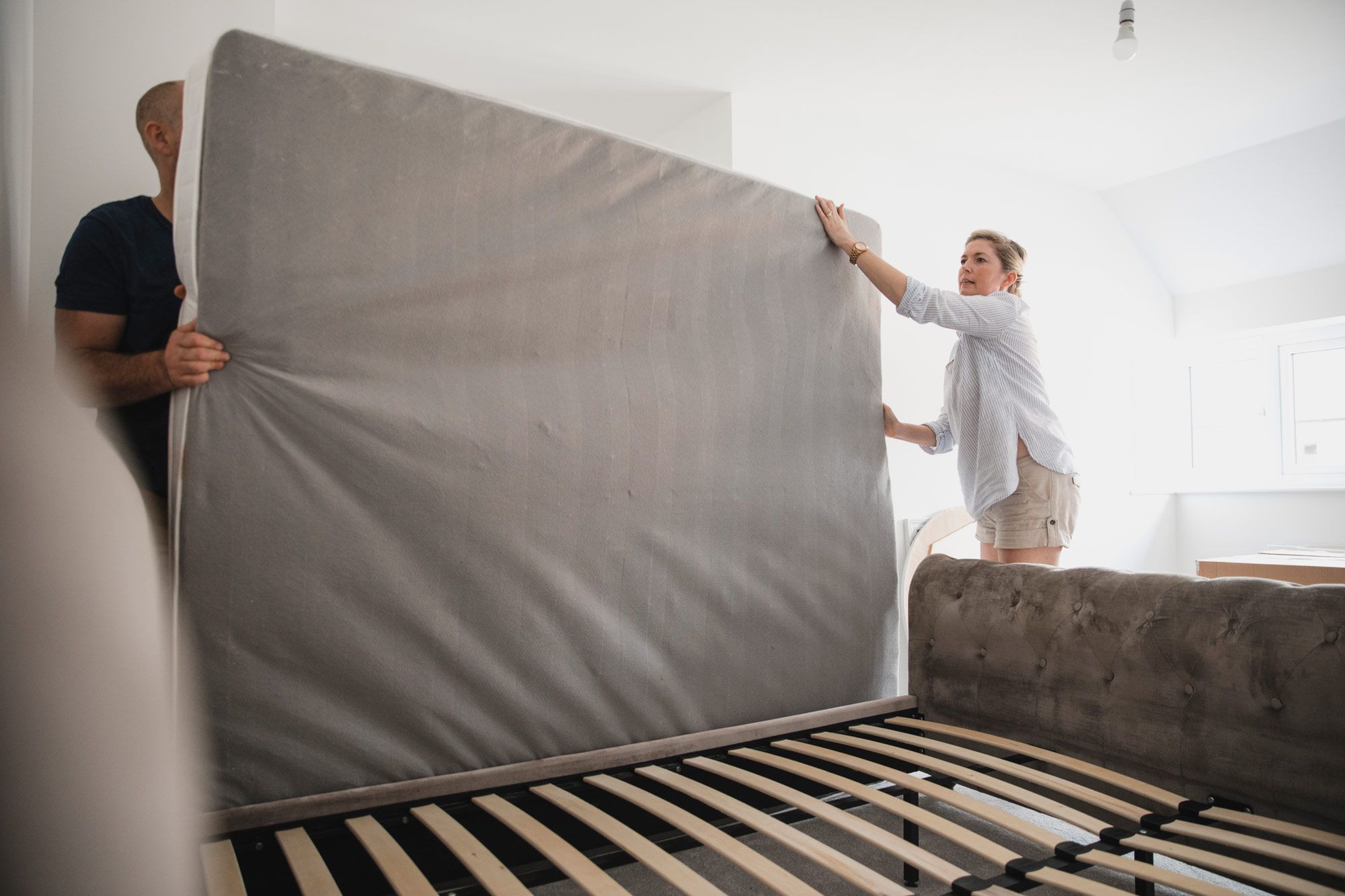
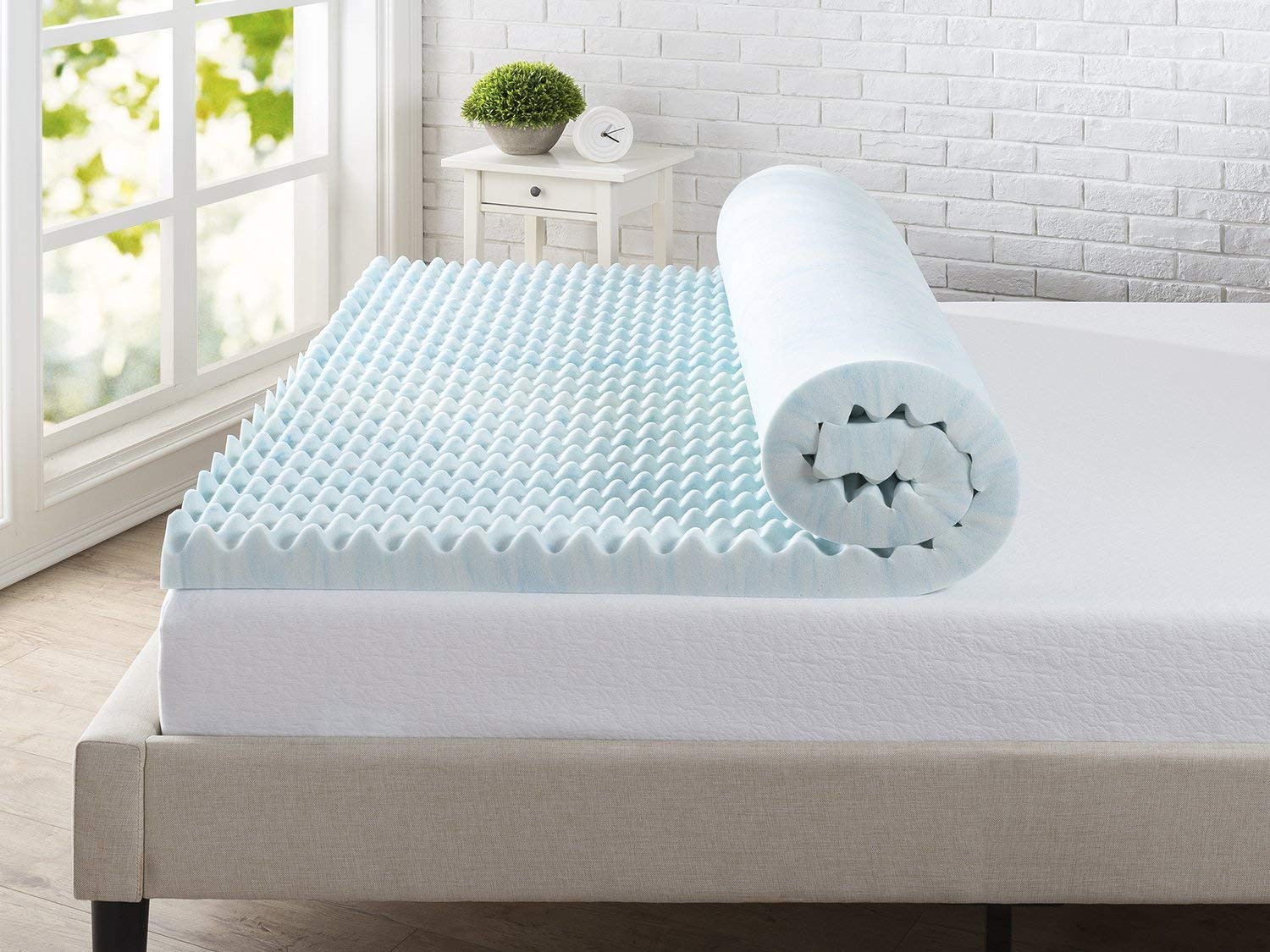
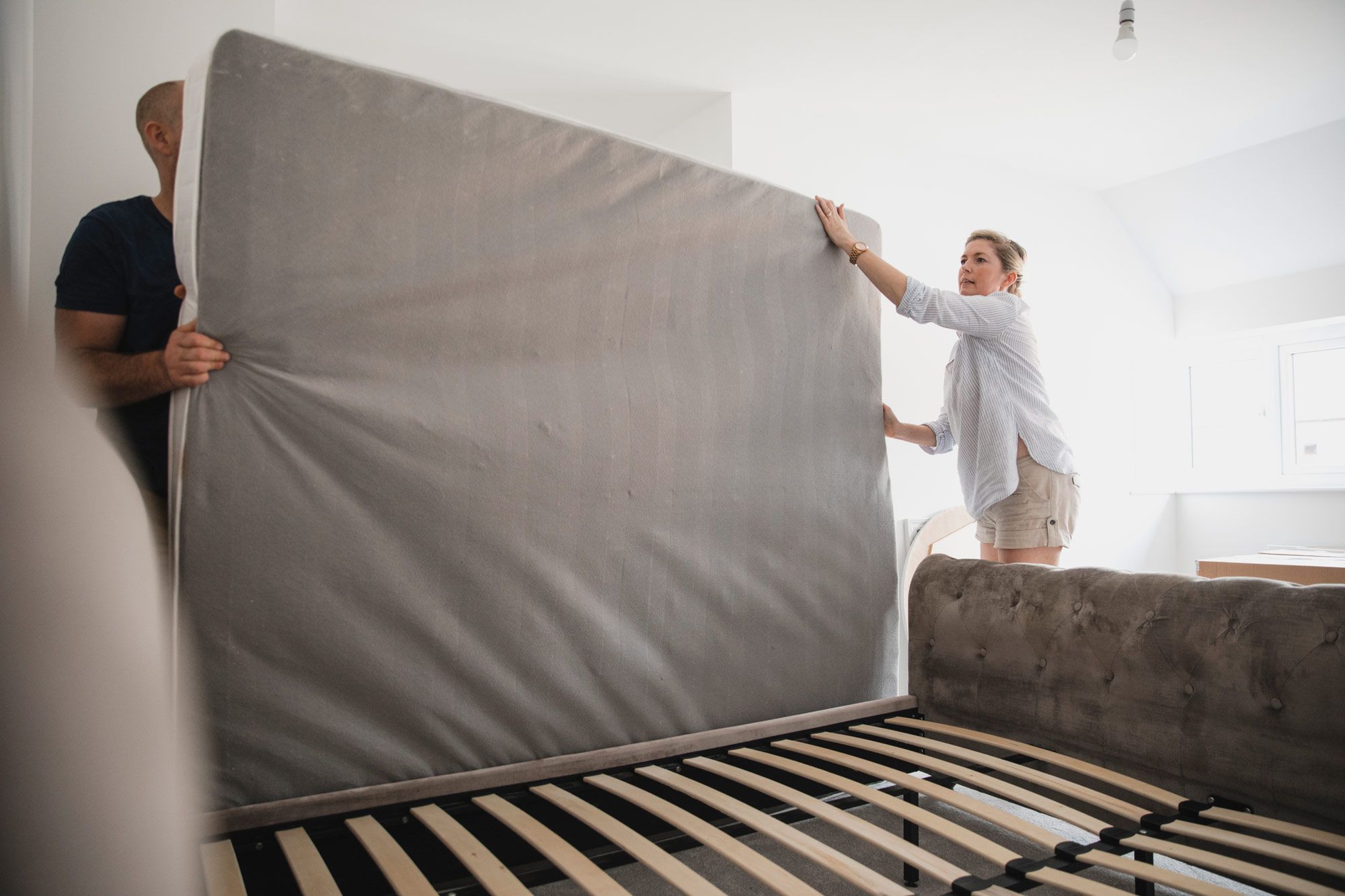


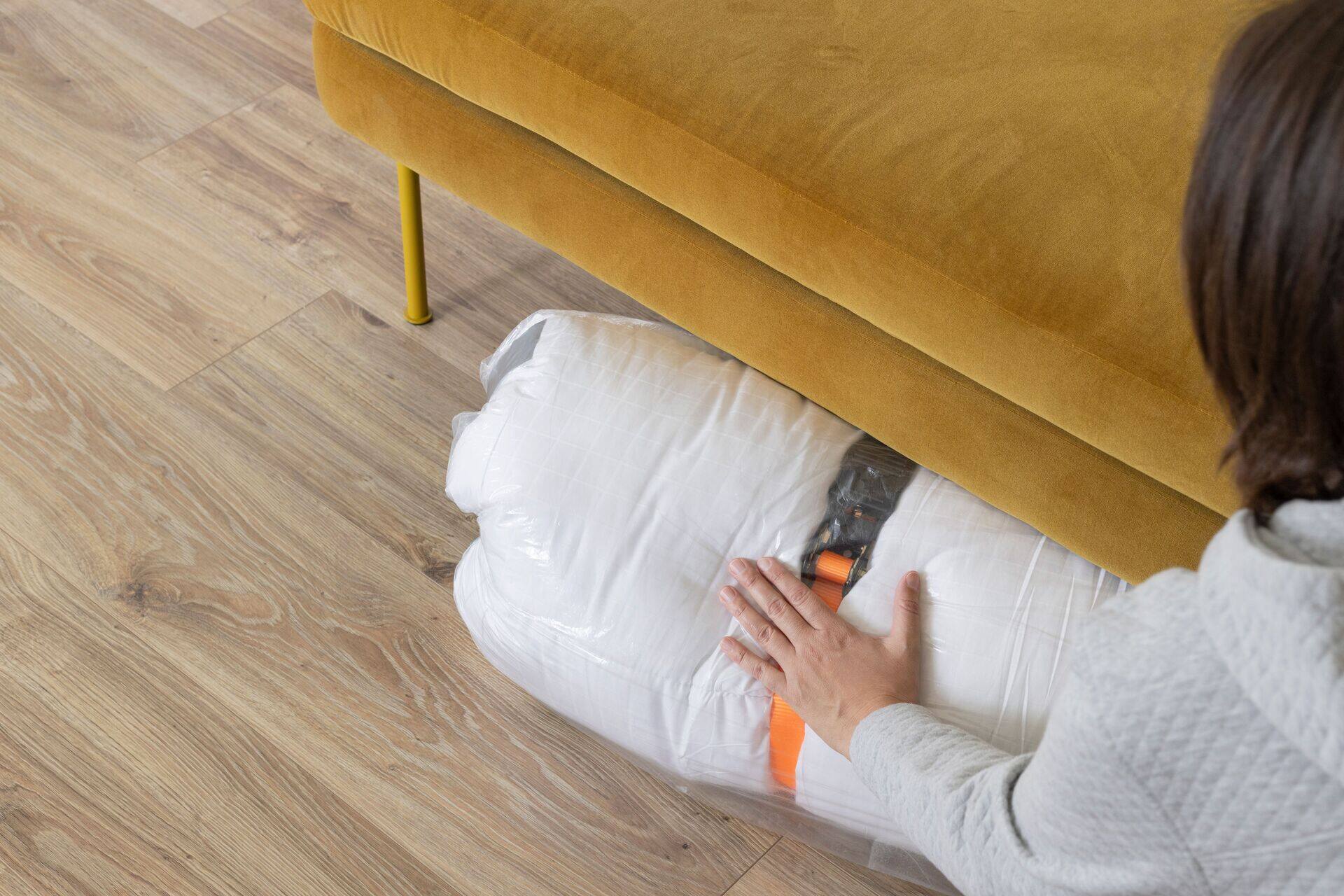

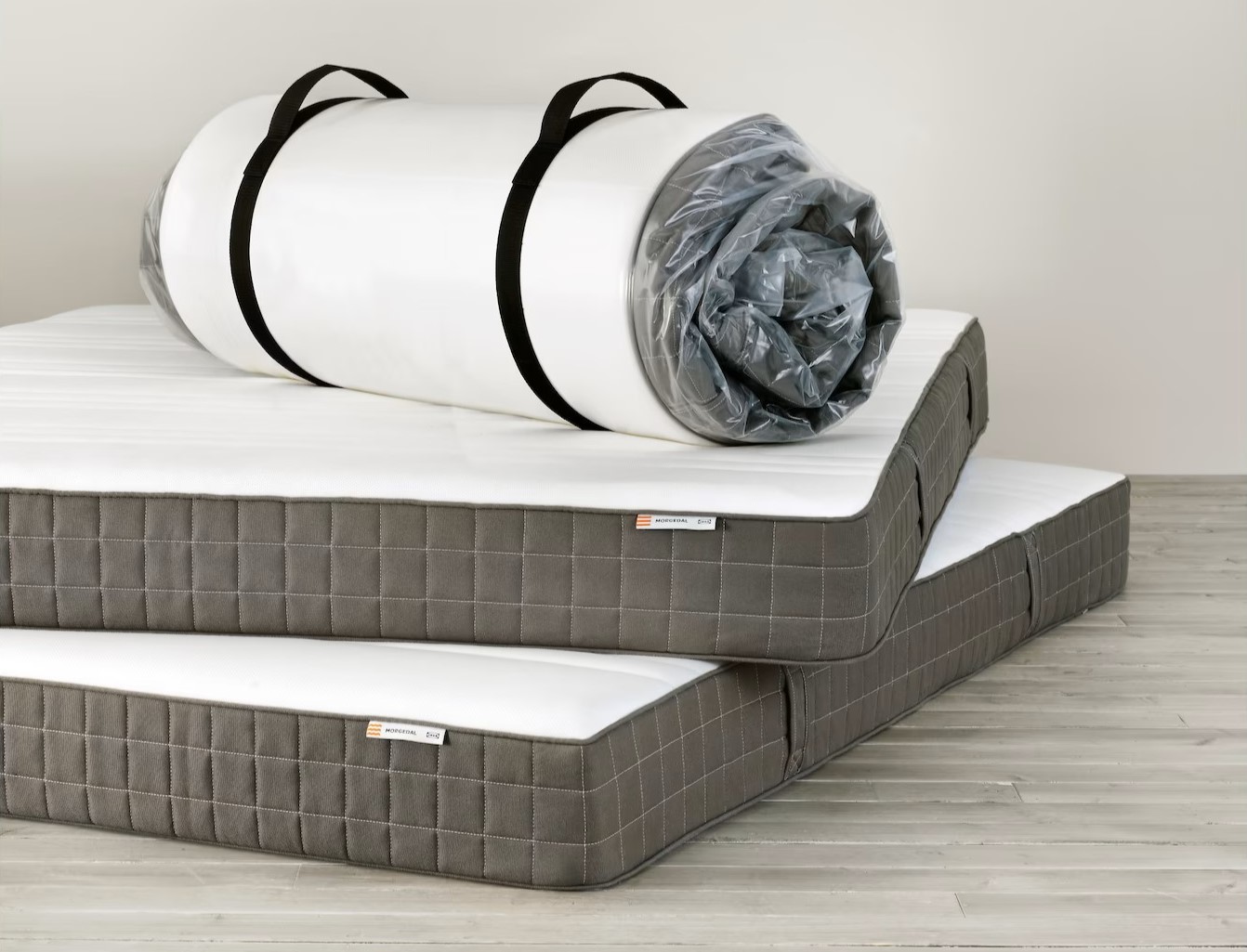
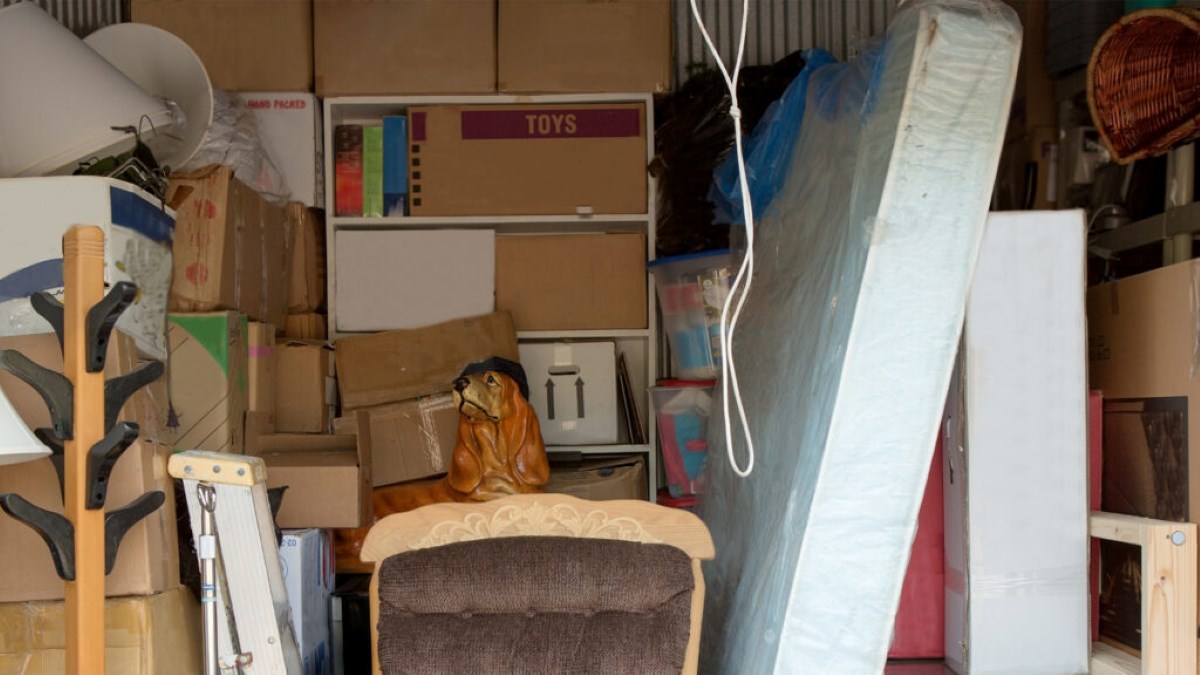
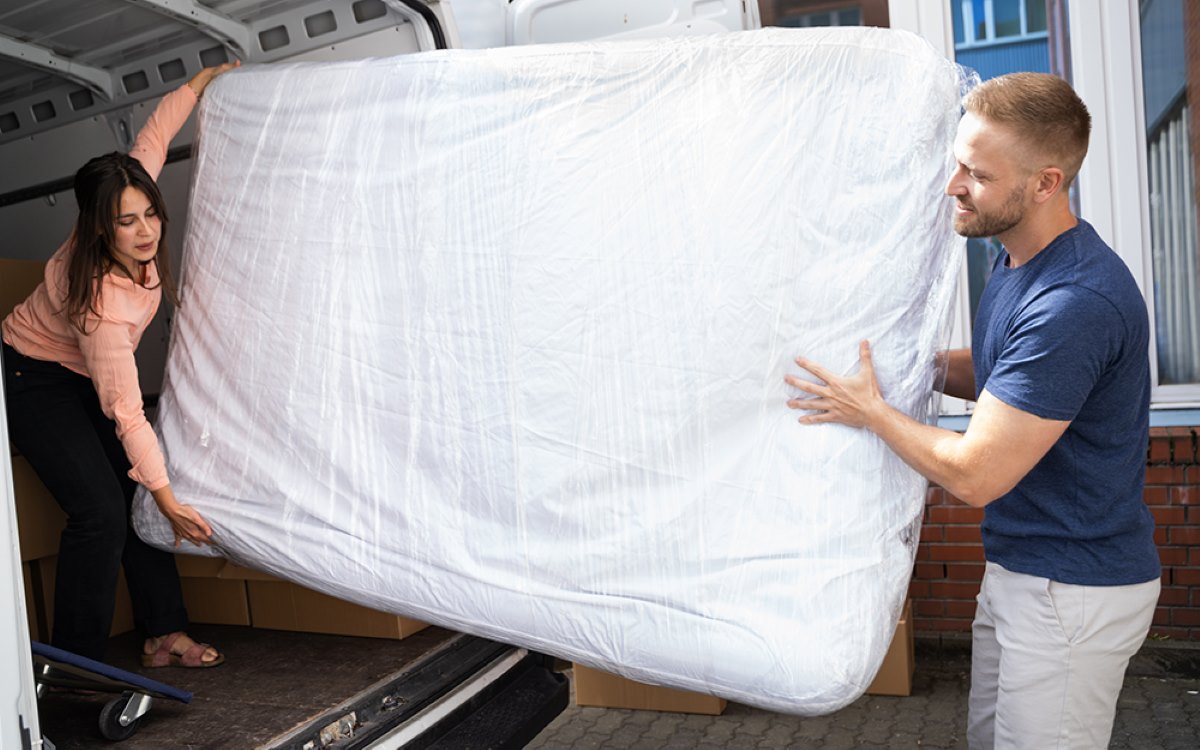
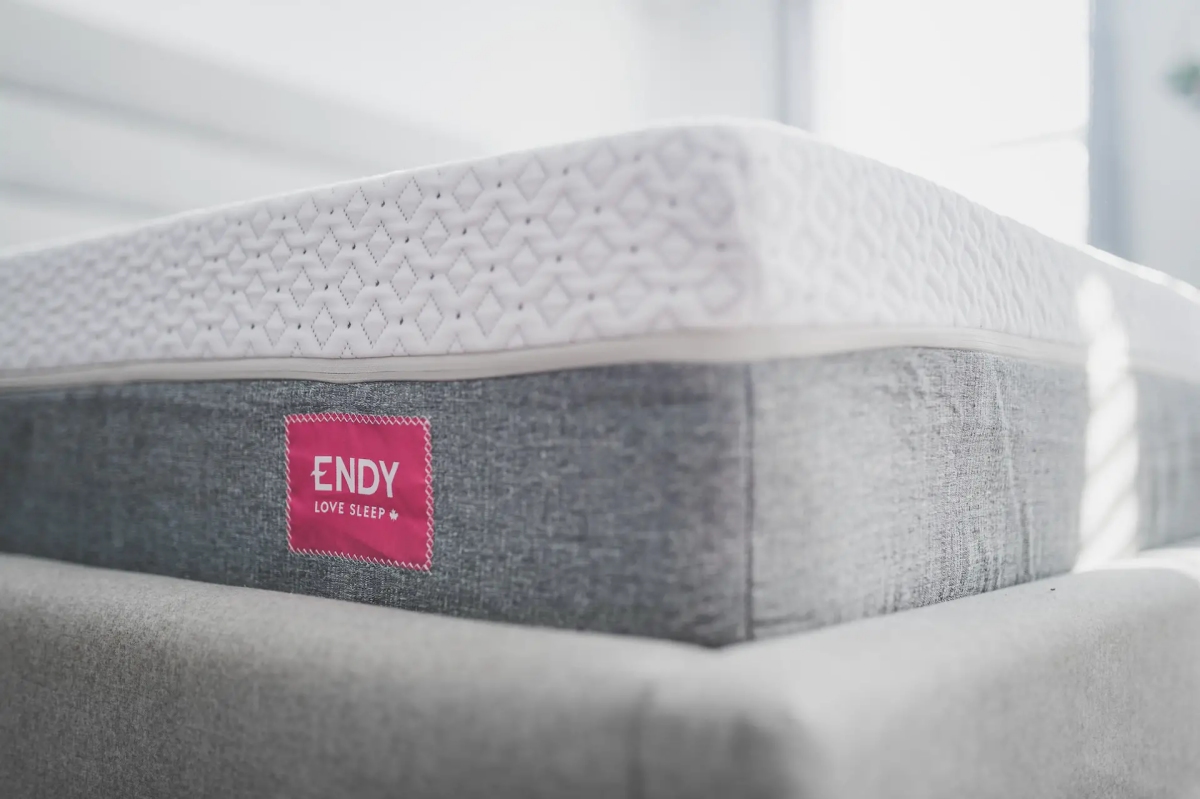
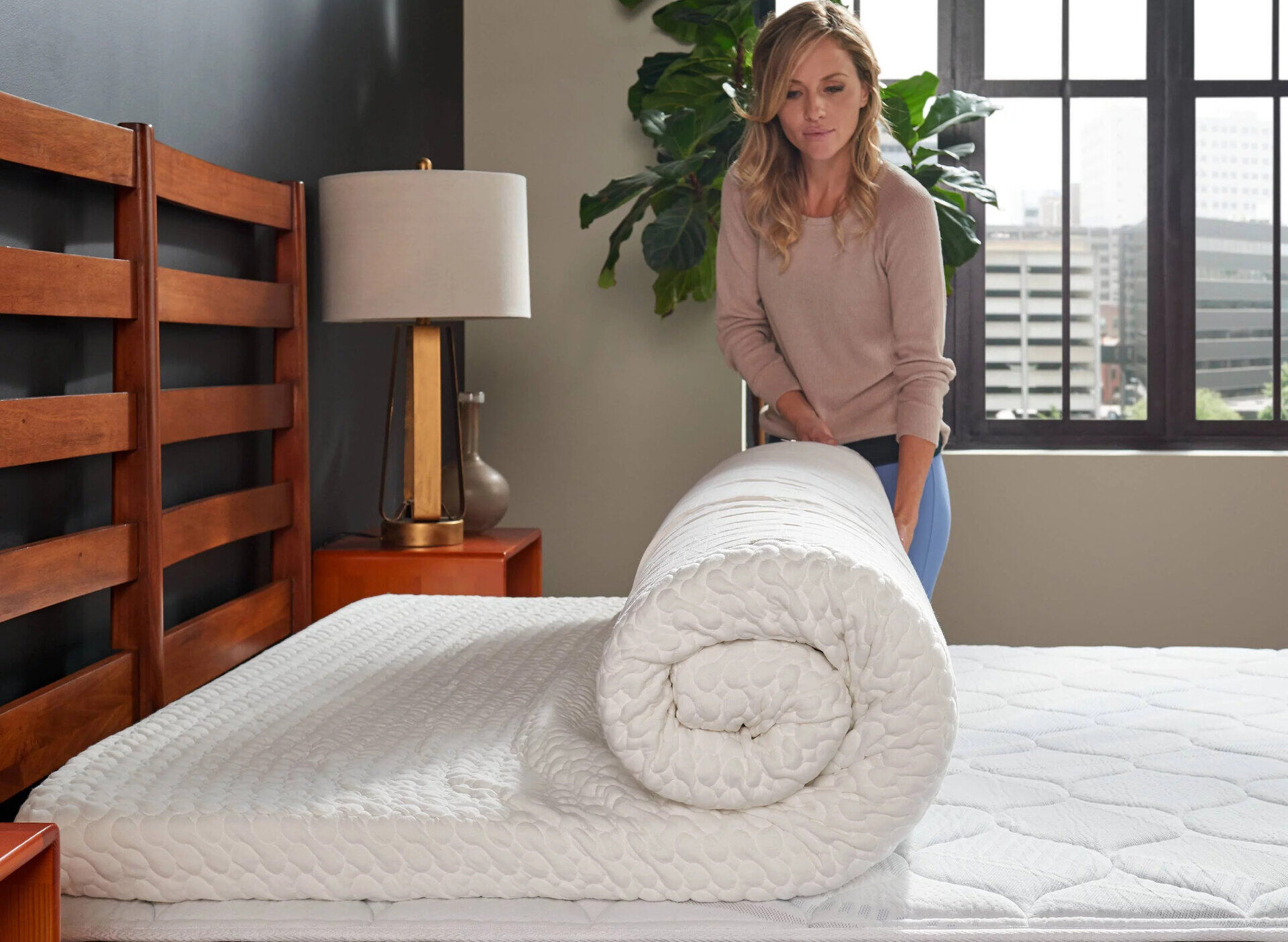
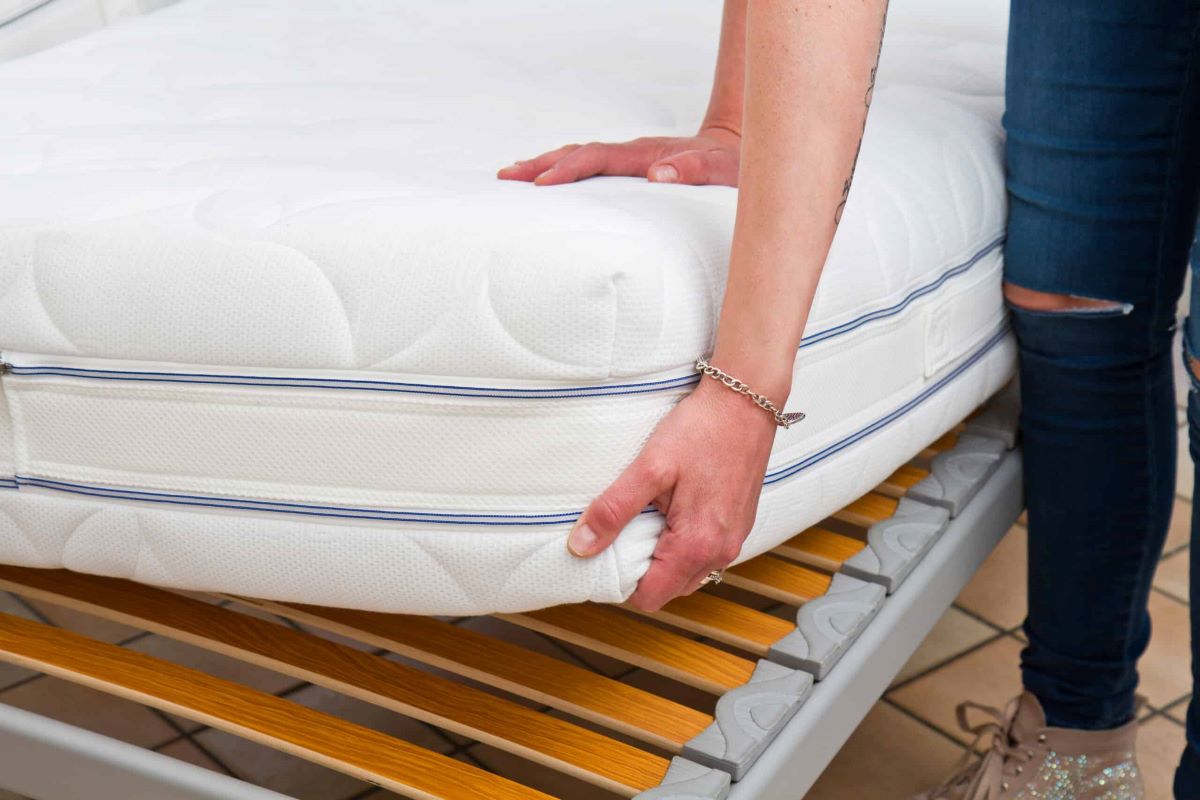

0 thoughts on “How To Store A Mattress”